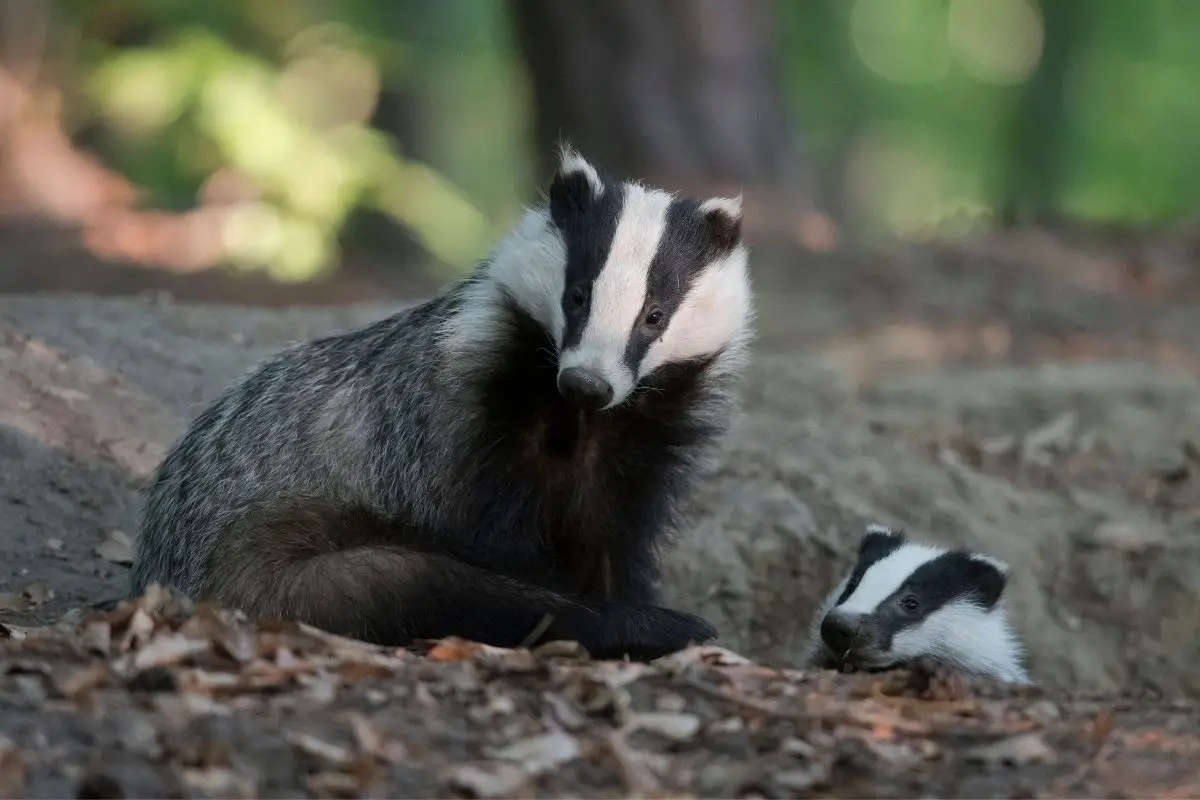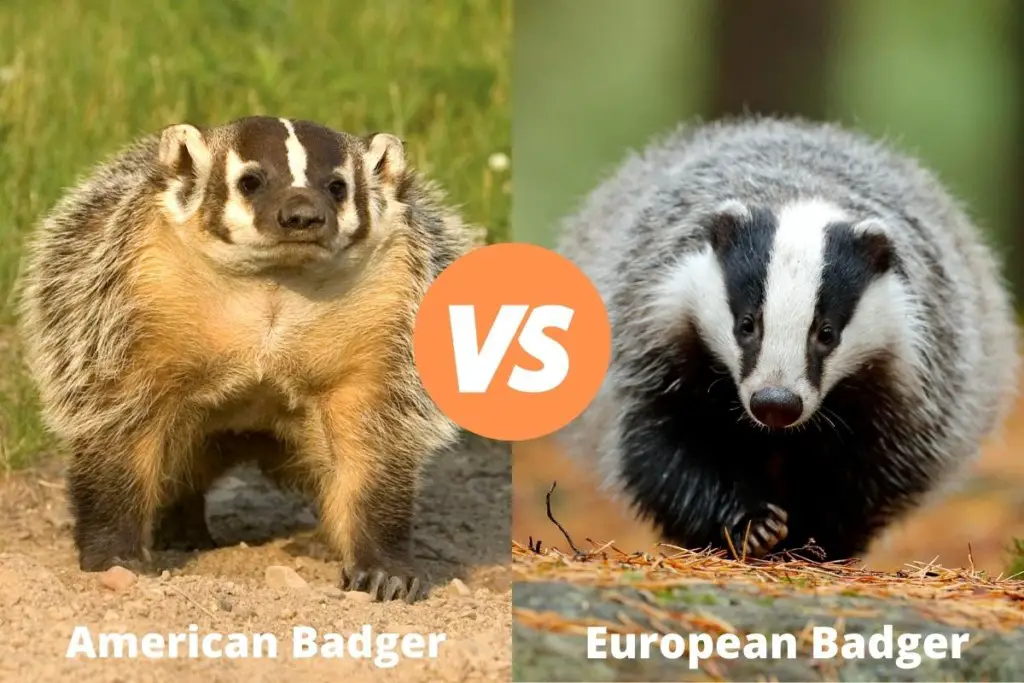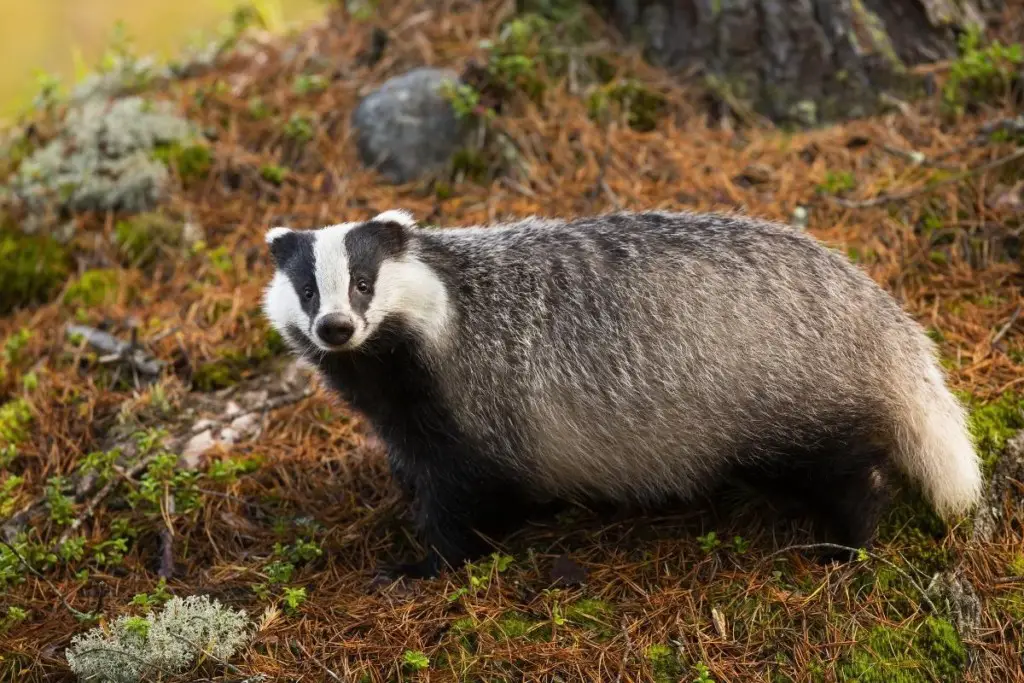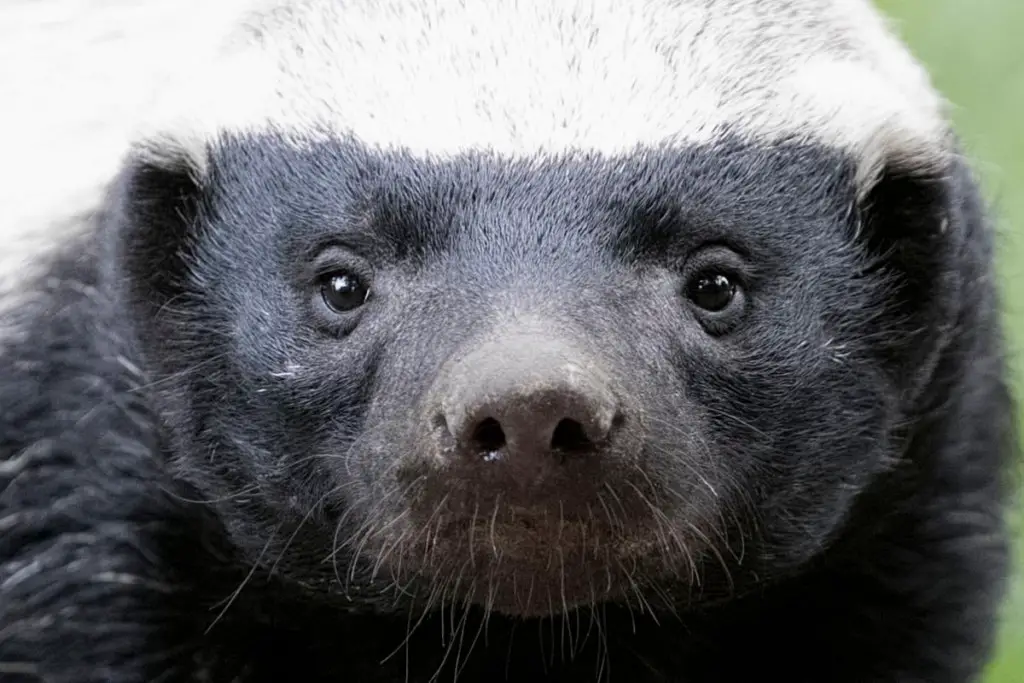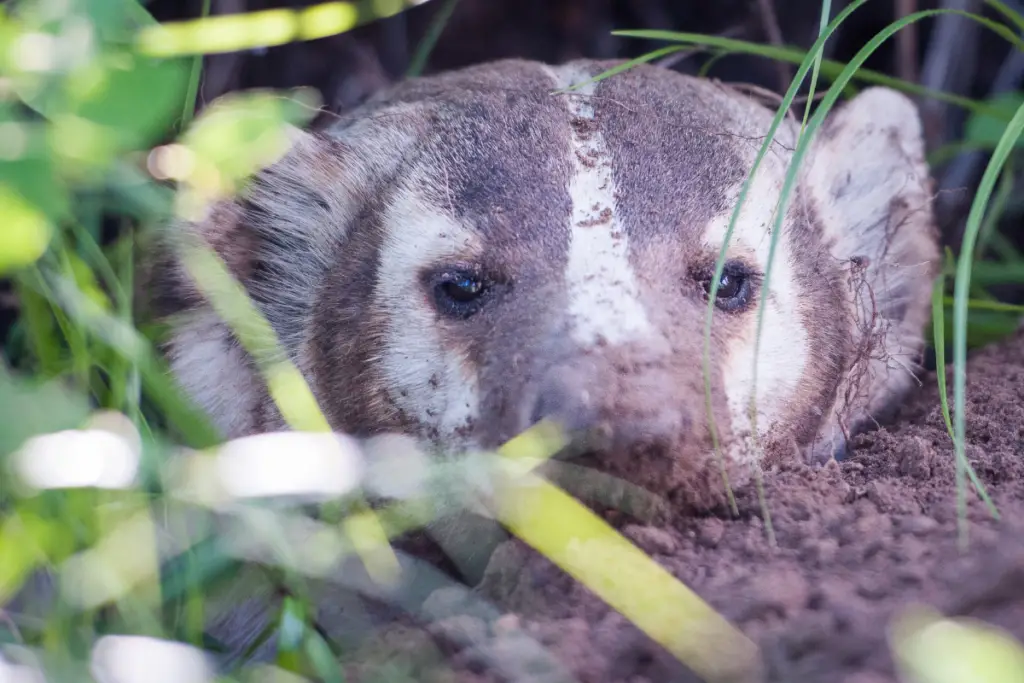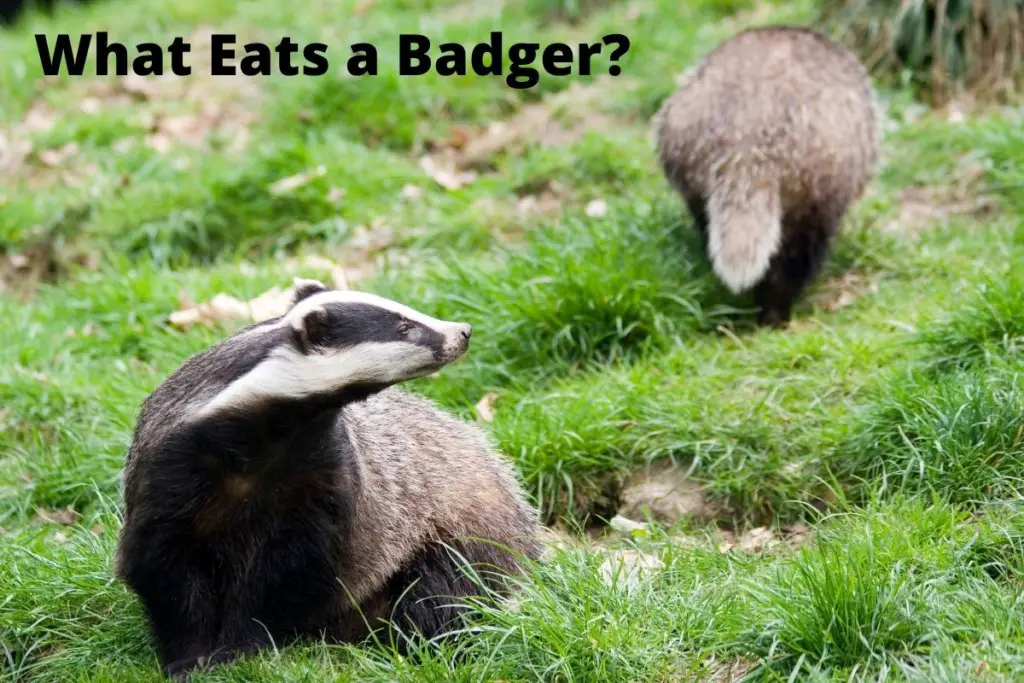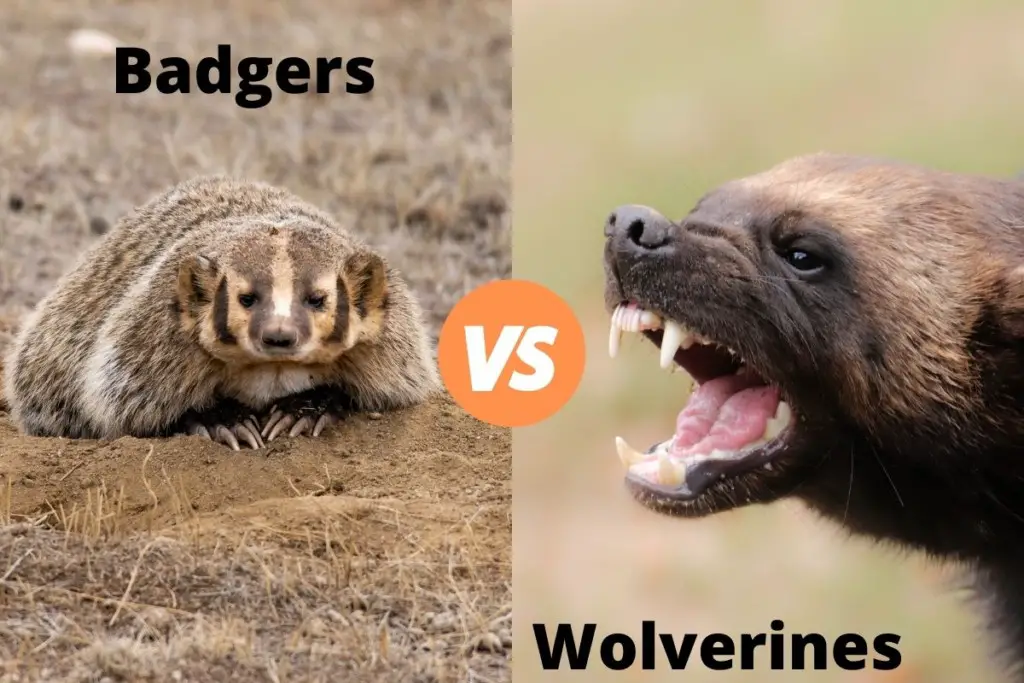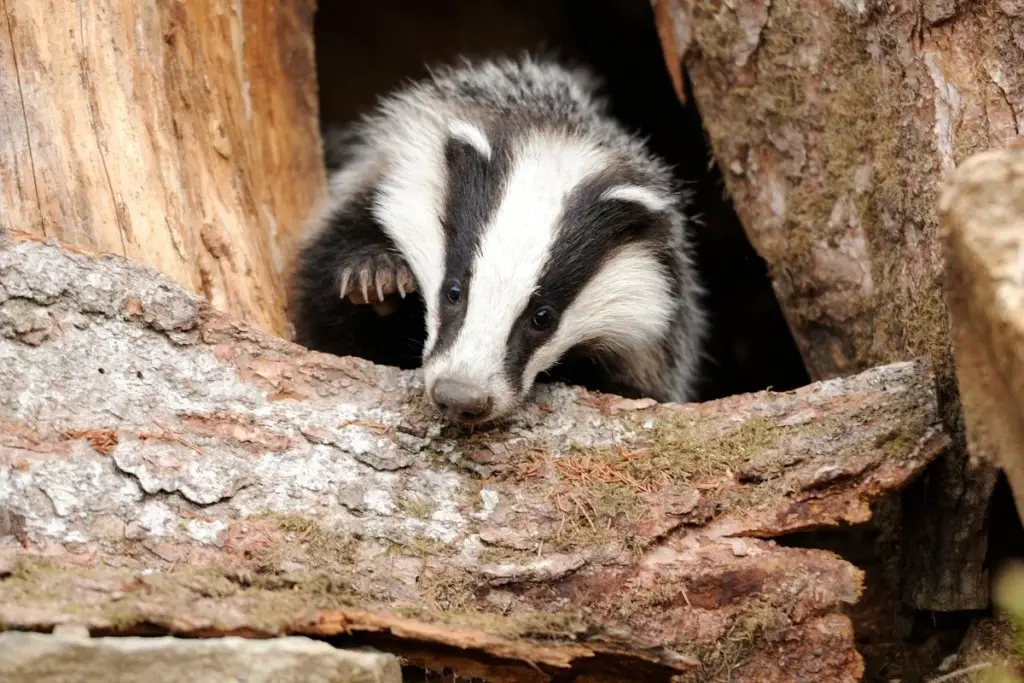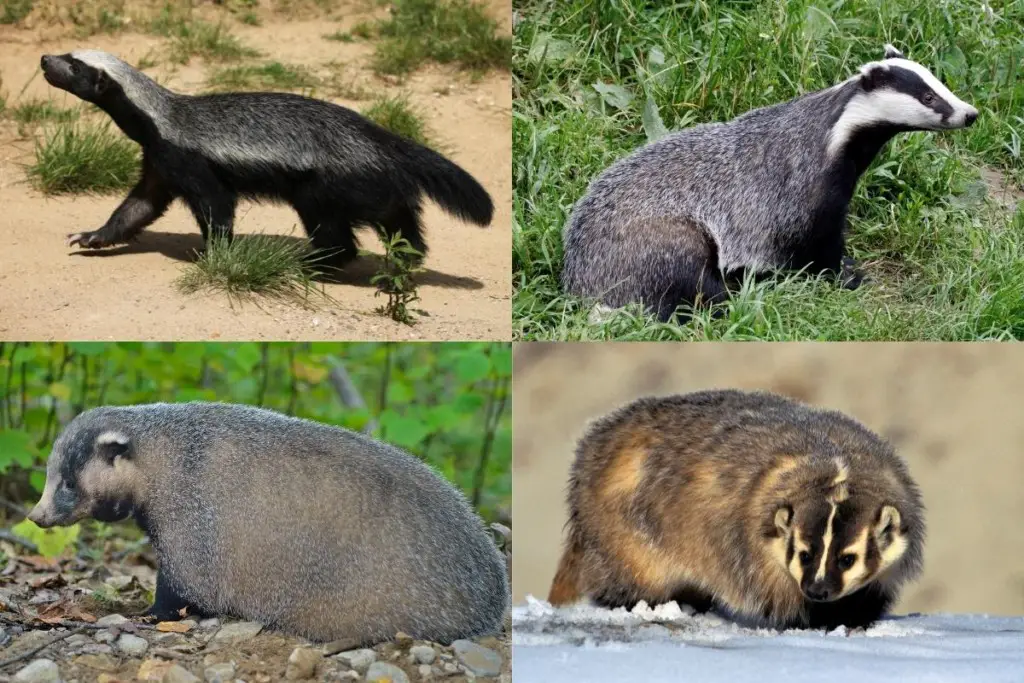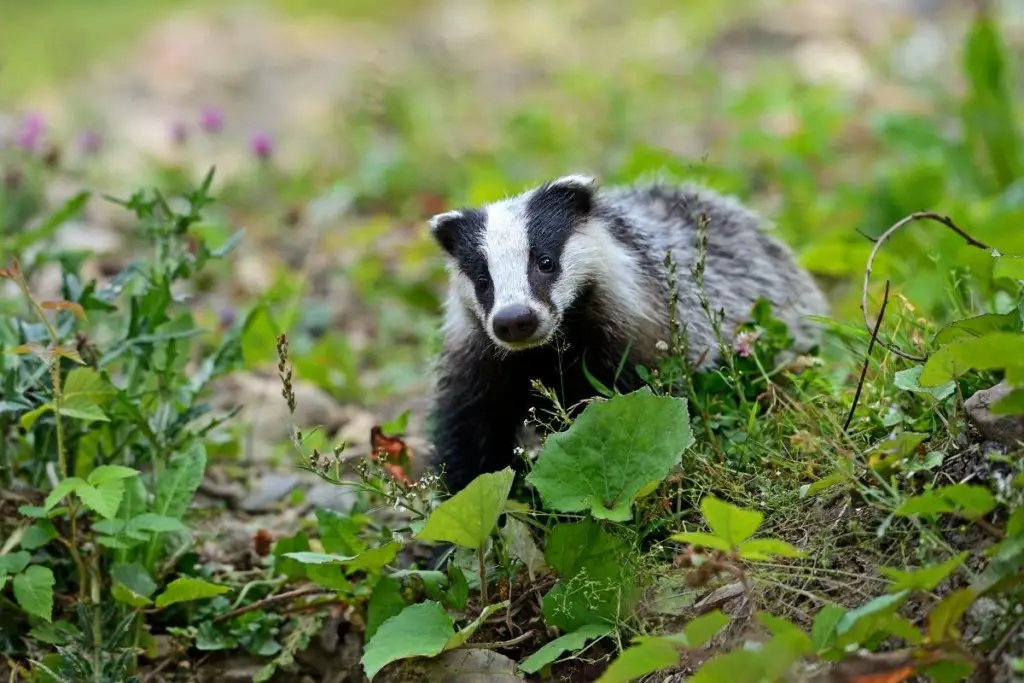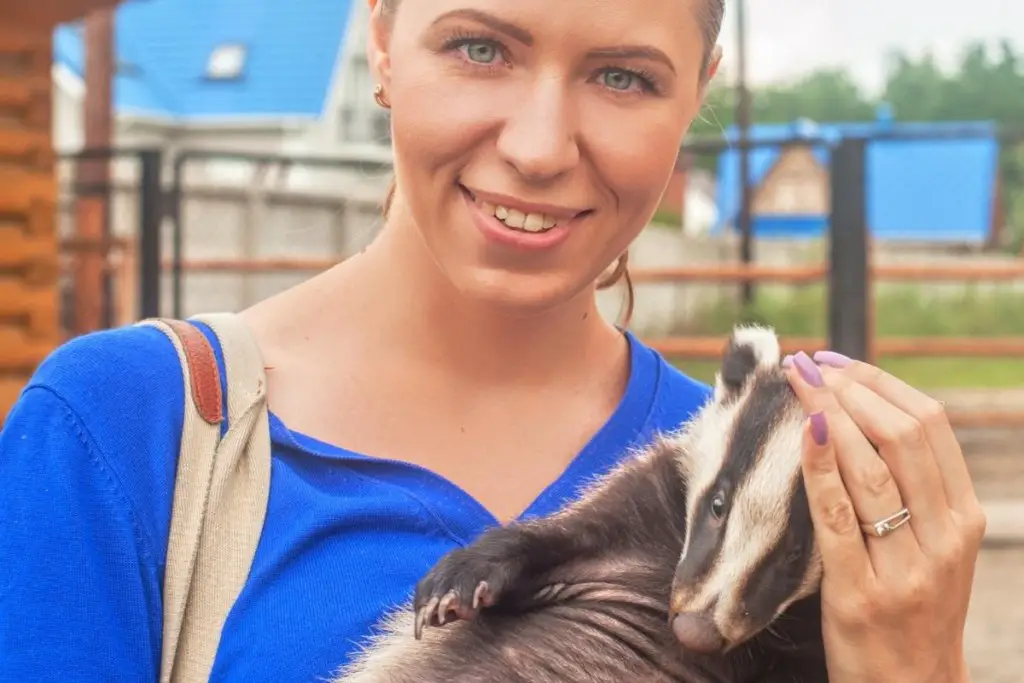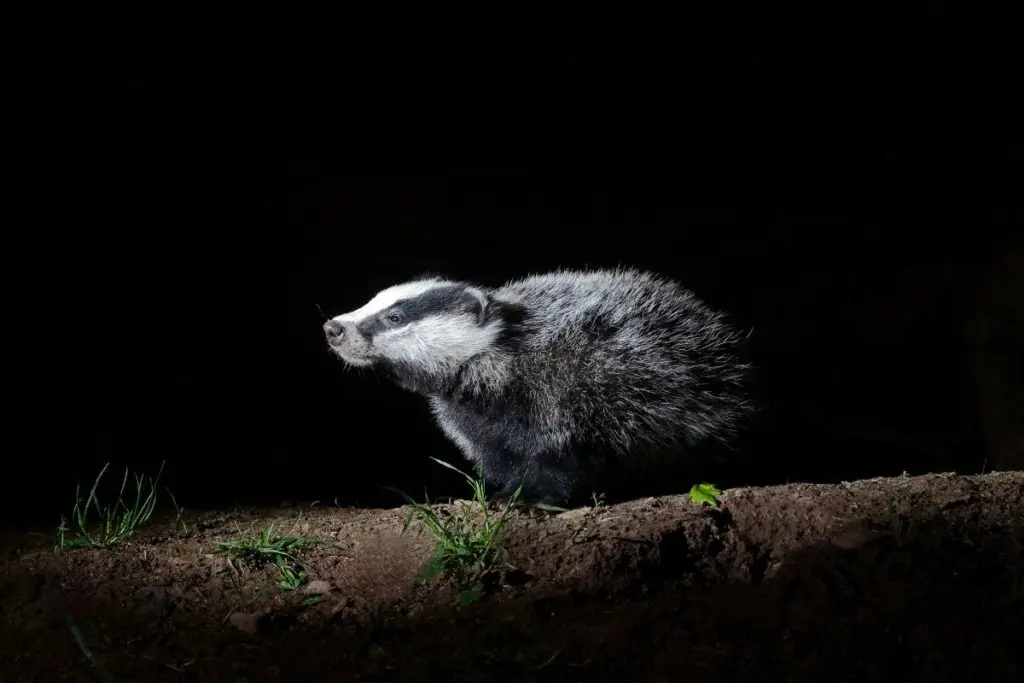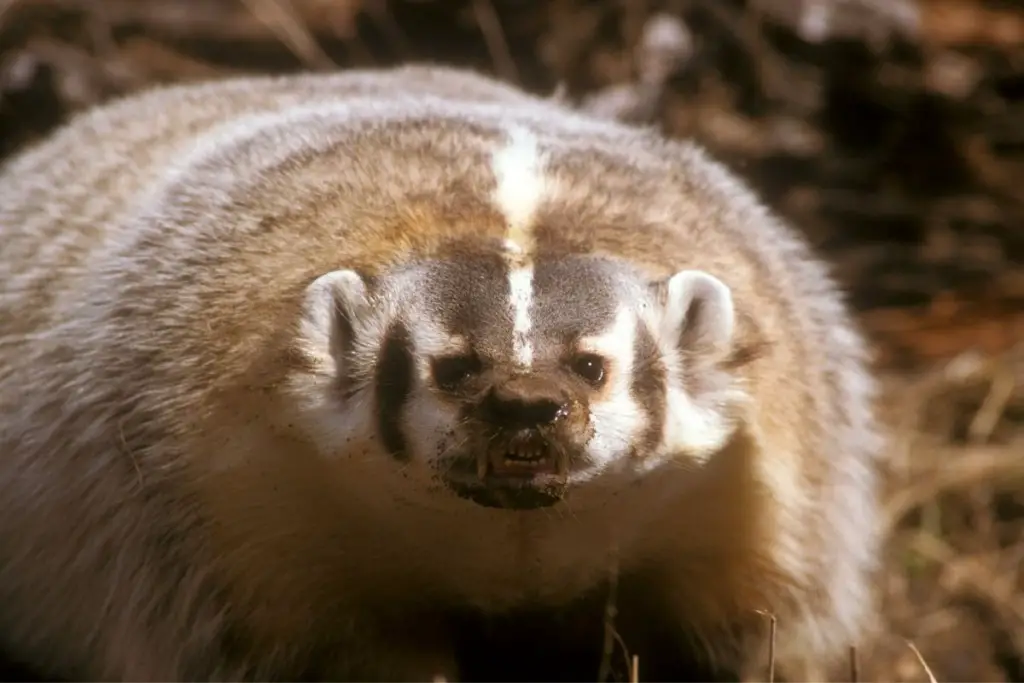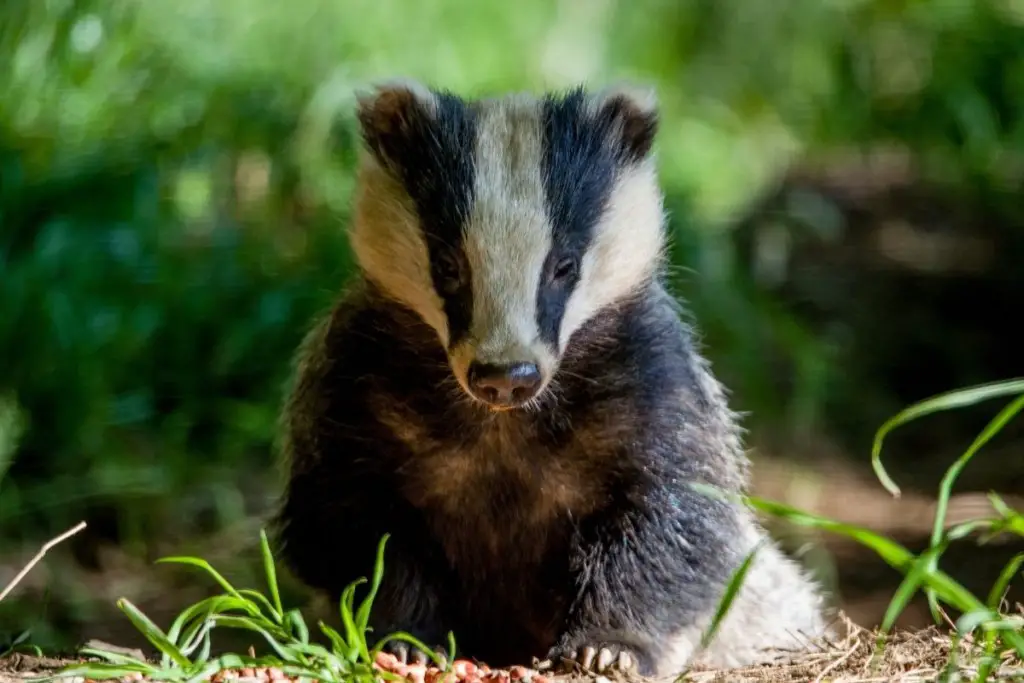Badgers are known for their unique looks and their ability to dig complex tunnels underground. Some places, such as in the UK, even have a hobby called “badger watching,” similar to bird watching. They are in the Mustelidae family and are related to weasels, ferrets, wolverines, and otters.
In this guide, we’re going to take a very close look at what makes badgers so unique and how they adapt in the wild.
What Are Badgers?
Badgers can be found in North America, as well as in Europe. They weigh around 20 pounds and their body is around 30 inches in length. They dig complex tunnel systems, called setts, that contain entrances and exits, places to cache food, and a den for sleeping. The tail of the badger varies in size depending on the species.
See our article for Badger Tails
The American badger (Taxidea taxus) looks a little bit different from the European badger. The American badger has a small white stripe on its head and face, while the European badger has a large white stripe down its head and face.
See our article for American Badger vs European Badger
Now let’s look at the badger’s scientific classifications.
| Badger Scientific Classification | |
| Kingdom: Animalia | Phylum: Chordata |
| Class: Mammalia | Order: Carnivora |
| Suborder: Caniformia | Family: Mustelidae |
| Subfamily: Helictidinae | Genus: Taxidea |
There are 8 commonly known badger species, from the American Badger to the Japanese Badger. Some types of badgers are not as common as others. Many of these badgers have variations in Genus.
Badgers – The Documentary
See our article Types of Badgers
There are also some subtle differences in badger species such as size, color patterns, and behavior. There is even a badger that is technically not even a true badger, the honey badger.
See our article Honey Badgers
Even though they are not the same species, honey badgers are still part of the Mustelid family.
Badgers Teeth
What kind of teeth do badgers have? Badgers have sharp teeth that allow them to eat a carnivorous diet, as well as vegetation. Badgers’ teeth are made up mostly of canines, incisors, premolars, molars, and cheek teeth. They have two large canine fangs that help them rip through the meat of their prey animals.
Badgers also use their teeth, as well as their claws, to groom themselves. This allows them to be very thorough, using both claws and teeth to finely clean their fur and skin. Badgers have been known to have dental anomalies, which means different test subjects had variations in tooth count, size, and more. Source.

How Strong is a Badger’s Bite?
Badgers have an extremely strong bite. In fact, they have a stronger BFQ (Bite Force Quotient) than many other fierce carnivores, such as bears. Their BFQ is around 109, while bears are only around 44 – 78.
See our article What Do Badgers Look Like
They rely on this biting power to strike quickly, killing their prey and sectioning it into pieces. Some badgers are surplus killers and will kill more prey than they need and store it in a cache, in their sett/den, or bury it nearby. In some states in the U.S., the badger is a protected animal. In the UK, badgers are protected animals, and badger setts are also protected. Source.
See our article Badger Dens
Baby Badger Teeth | Badger Animal
Baby badgers are similar to other mammals, in that they get their milk teeth in about 4 months. Once they are done weaning, they get their permanent dentition. Baby badger teeth start to grow strong after they are through weaning.
This makes their teeth stronger so that they can start to rip through meat and have a normal diet, consisting mostly of prey animals and some vegetation.
Are Badgers Mean?
Badgers can be mean when they have to be. Badgers love to show their teeth when they feel threatened. This is a tactic that they use to scare away threats, such as predators, animals trying to take over dens, and other wild animals.
See our article Badger Predators
Badgers are not mean all the time though. They are social when they need to be. Some badgers live in groups called clans, and they share dens, also called badger setts. Unless the badger is threatened, there is no need for it to be mean, or to show its teeth.
European badgers are more likely to live in groups, while American badgers are more solitary. Badgers mostly come out during the night, although they can also display some crepuscular behavior as well.
See our article Are Badgers Nocturnal
Are Badgers Aggressive?
Badgers are not known to be aggressive towards humans. In most cases, badgers avoid any contact with humans or urban areas where there is human activity. If by chance you do come across an aggressive badger in the wild, it may be aggressive due to territory, having badger cubs nearby, or because it is injured.
See our article Badger Babies
Are Badgers Naturally Aggressive?
Badgers can naturally be aggressive to scare away a predator or another animal that has invaded the badger’s territory. This is a defense mechanism that they use to stop an encounter before it happens.
In some cases, the fierceness of the badger’s aggressive behavior can be enough for a larger predator to move on. They may also start the make noises, growling, and making other types of sounds.
See our article Badger Sounds
There could be a small chance that aggressive behavior could be a symptom of rabies or being distempered. If you come across a badger that you think is sick or injured, keep your distance and do not approach the animal.

See our article How Long Do Badgers Live
If you need to, you can call someone for help that has experience with animals, such as animal control.
See our article Are Badgers Dangerous
Do Badgers Eat Cats?
Badgers do not eat cats. Felines are not a part of the badger’s natural diet and they would not attempt to eat a cat, because a cat would fight back and would be more trouble than they are worth. This doesn’t mean you shouldn’t take precautions if you think badgers are getting close to your pets.
You should keep your pets inside any time you think there could be wild animals near your home. Even though badgers are not known to kill housepets, such as cats, they are still wild animals, and those instincts can kick in at any time.
Are Badgers Dangerous to Dogs?
No, badgers are not a danger to dogs. Badgers do not attack animals that could fight back, they would rather go for an easy kill of a rodent. They will eat almost anything, but to my knowledge, a dog is not on the menu.
However, a badger may feed on carrion, so if the dog is diseased then it could become a meal for scavengers, like badgers and other animals. You should still bring a dog inside if you are in fear of a wild animal being on your property.
See our article What Do Badgers Eat
Badger Holes
Badgers are known for digging complicated tunnel systems that are called dens or setts. These tunnels have many entrances and because of this badger holes can be found near the main den entrance. In most cases, one badger sett can have multiple entrances and can be found all around the den area.
How to Identify a Badger Hole
If you think you have come across a badger hole, then you may need some help identifying it. Badgers dig holes that are wider than they are tall. This is because their bodies are wide but they do not sit or stand very tall.
The bottom of the hole will be flat, and just outside of the hole you will find a heap or mound of dirt. This is dirt the badger kicks out while digging the tunnels. Sometimes you will see a large mound if the tunnel system has many tunnels.
Do Badgers Dig a Lot of Holes?
The number of badger holes you find will be due to the number of tunnels are in the sett. Small dens may only have 3 holes, while large complex setts can have as many as 10. Some badger setts will accommodate up to 10-13 badgers, so you can imagine how many tunnels and entrances there are in one of the bigger tunnel systems.
What Size is a Badger Hole?
Badger holes can be several different sizes. They usually range from about 6 inches wide up to around 12 inches wide. Some badger setts are generational and can be very old. These dens usually have more wear and can have slightly larger holes in some areas.
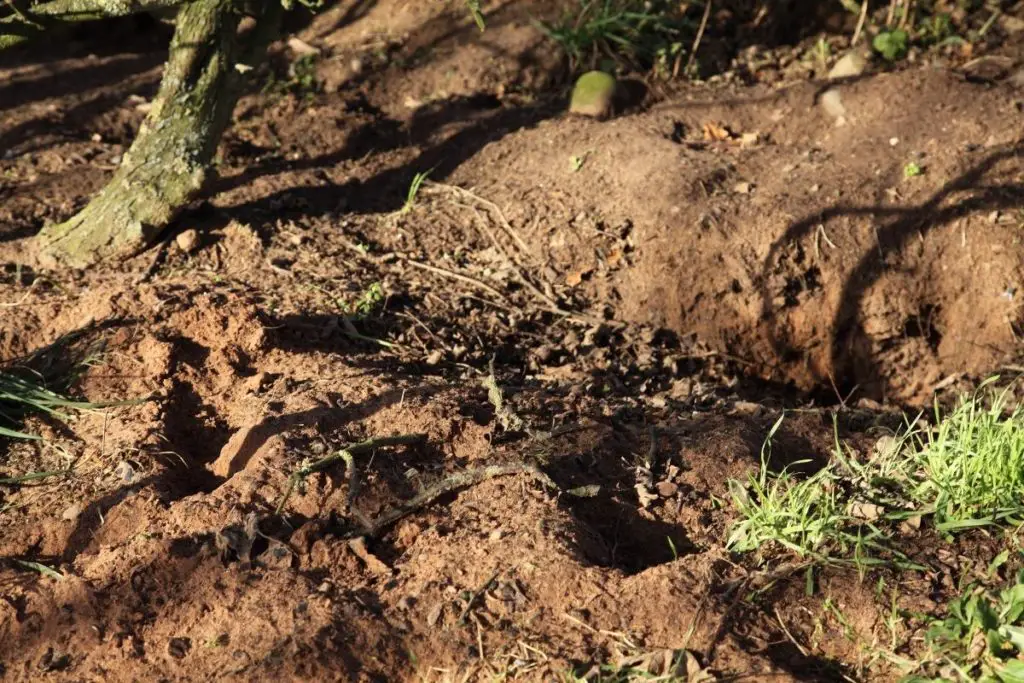
See our article Where Do Badgers Live
American Badger Range
The range of the American badger goes from Canada, Texas, and Oklahoma, down to Mexico. They are most abundant in the regions of the great plains. Badgers love open land and will dig many dens and setts, creating vast tunnel systems in many areas within their home range.
American Badger Home Range
The home range of a badger consists of about 1,700 to 2,100 acres. They stay in this home range for most of their lives. Their home range can change with the seasons, having a larger home range in the summer, and a smaller home range during winter.
See our article Do Badgers Hibernate?
How Far Does a Badger Travel at Night?
Since badgers are nocturnal, they do most of their hunting and traveling at night. They will leave their dens and setts looking for food. They will go as far as 12 miles from their dens, and may even have multiple dens along the way that they use.
In the wild, animals have to constantly be on the hunt for food, there are many times when food is scarce, so they spend many hours searching, pushing further to find prey animals and things to forage on.
American Badger Range Map
The American badger can be found in a huge part of North America. In this map, you can see all of the areas where badgers are permanent residents.

See our article Badger Habitats
Are Badgers Rodents?
Many creatures in the wild resemble rodents, because of their size and because of how they look. Despite having a facial structure and body that can be mistaken for a rodent, badgers are not rodents.
What Kind of Animal is a Badger?
Badgers are part of the weasel family. This includes badgers, several animals such as skunks, and wolverines. No members of the weasel family are considered rodents and are generally larger than most rodents.
See our article Badger vs Wolverine
Are honey badgers rodents? No, honey badgers are not rodents. Honey badgers are part of the weasel family, much like American and European badgers. Many people may not know, that honey badgers and badgers are different animals.
Do Badgers Kill Rats? | Badger Animal
Not only are badgers not rodents or pests, they actually kill and eat rodents and other pests as a food source. This makes them beneficial to many regions. You can expect to find badgers in areas where rodents are abundant.
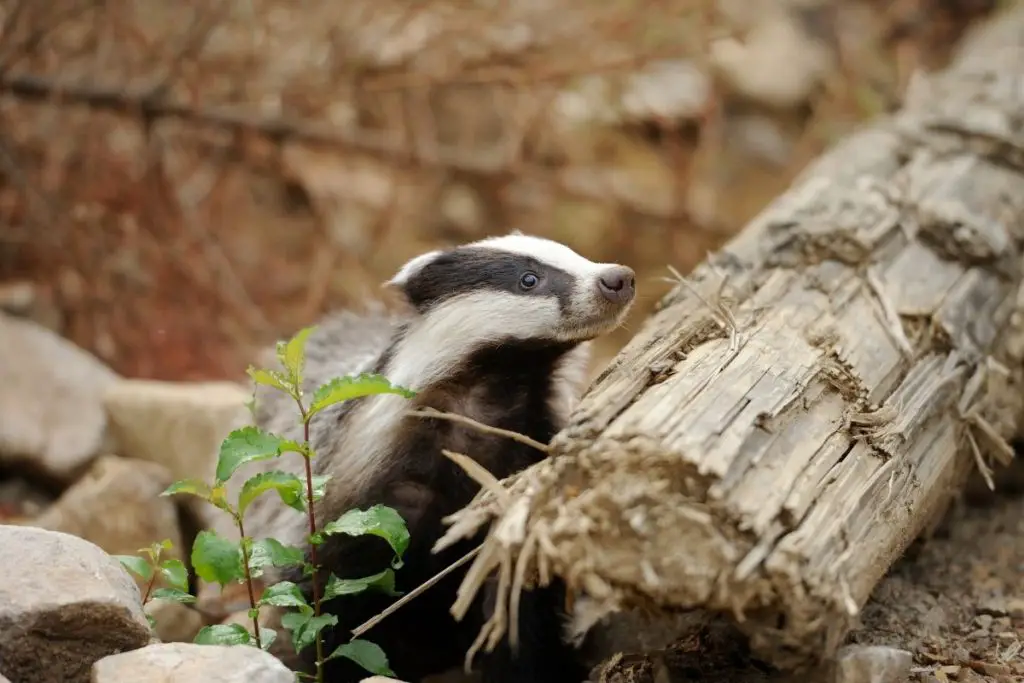
Badgers in Texas
When it comes to the range of badgers in North America, they pretty much cover the map. They can be found in many regions and throughout many landscapes.
Are There Badgers in Texas?
Texas is home to many American badgers that live in meadows, fields, and open forests. Texas provides many of the resources that badgers need to survive, such as water, food sources, and an environment that allows them to thrive.
Where Are Badgers Located in Texas?
Badgers are commonly found in most parts of Texas. This includes East Texas, West Texas, South Texas, and Central Texas. I live in North Texas and have spotted badgers many times while driving at night. Badgers in the Texas panhandle are mostly nocturnal, so you see them mostly at night. Source.
Because badgers can even be found in Mexico, you can find them throughout South Texas. Badger populations are strong in Texas and they continue to increase their numbers.
Are Badgers Protected in Texas? | Badger Animal
No, badgers are not protected in Texas. Badgers are considered furbearers, so you would have to have a hunting license. With a hunting license, the badger can not be sold or traded. The badger’s fur/pelt can only be sold during furbearer season.
When selling pelts in Texas, the seller must have the correct licenses. There are fines and legal repercussions if this law is ignored. Source.
See our article How Long do Badgers Live
See our article for Pet Badgers
All Badger Articles
American Badger Vs European Badger
Badger Tail | Do Badgers Have Tails?
Honey Badger | The Ultimate Guide
How Long Do Badgers Live?
8 Badger Predators | What Eats A Badger?
Badger Vs Wolverine | How They Compare
Do Badgers Hibernate?
Badger Babies | The Ultimate Guide
Types of Badgers | Badger Species
Badger Habitat
Badgers As Pets | The Ultimate Guide
Are Badgers Nocturnal?
What Does A Badger Sound Like? (With Examples)
What Do Badgers Eat? Ultimate Guide
Badger Dens | The Ultimate Guide
Where Do Badgers Live?
Are Badgers Dangerous?
What Do Badgers Look Like?
Frequently Asked Questions
Badgers can be vicious when they need to be. However, badgers do not approach humans and are generally afraid of people. They are wild animals, however, so you should never approach them or try to pet them.
If you see a badger and wish to observe it, do so at a distance. Because they are wild animals they are dangerous even if they do not look like them. If you are worried the badger is somewhere it shouldn’t be or is in danger you should call animal control.
Badgers are known for being impressive diggers. They dig large complicated dens with many openings and tunnels that are called setts. They also dig to get to different food sources, such as rodents, rabbits, and other animals that live in the ground.
Badgers are wild animals so they are not domesticated, however, there are reports of badgers being tamed. When taming a wild animal, it is important to obtain them when they are babies, to form a lifelong bond.

